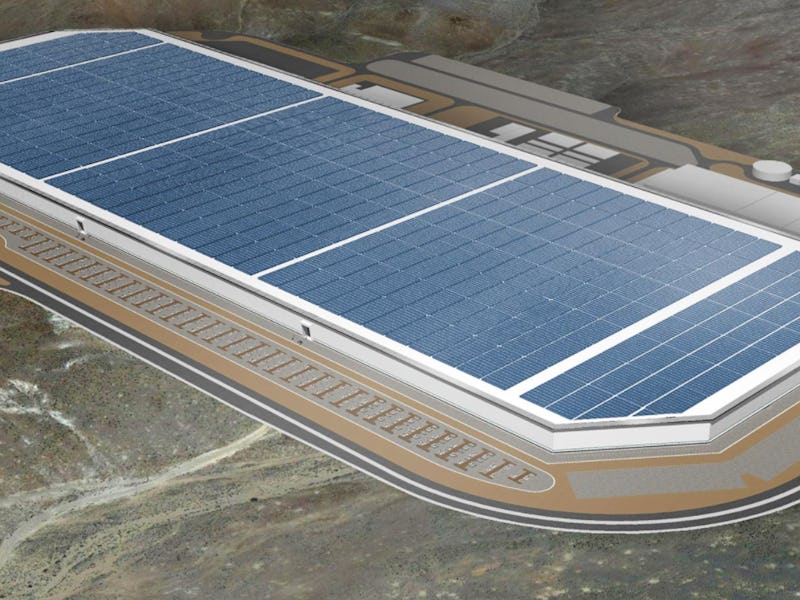
Financial analysts who have visited the Tesla’s factories for a first-hand look at the Model 3 production process are positive the automobile manufacturer can begin mass-producing the electric car.
George Galliers, an analyst at Evercore ISI who visited Tesla’s Fremont factory in August, said that he “did not see anything to suggest that Model 3 cannot reach 6,000 units per week and 7,000 to 8,000 with very little incremental capital expenditure.”
More recently, investment management firm Worm Capital sent a team to visit Tesla’s Nevada Gigafactory. Analysts for Worm Capital, LLC, Eric Markowitz and Dan Crowley, were given behind-the-scenes tours of each production wing of the massive battery factory, which is ultimately expected to become the largest building in the world.
Markowitz and Crowley believe that the all-important question of profitability hinges on how efficiently the company is able to manufacture its battery packs. After touring the facility, they feel “highly confident in Tesla’s production process. Previous bottlenecks appear to have been remedied, and we’re increasingly optimistic in Tesla’s ability to hit — and sustain — weekly production rates of 6,000 Model 3 battery units per week, and with new Grohmann machines, scale to [around] 8,000 per week with minimal additional capital investment.”
The Tesla Gigafactory outside of Reno, Nevada visited by Eric Markowitz and Dan Crowley of Worm Capital.
Both analysts believe that Tesla’s 2170 NCA battery cells, produced in partnership with Panasonic, give Tesla an advantage over its competitors. “We also continue to believe that small cells are superior for several reasons, making it perplexing that many legacy OEMs continue down prismatic or pouch paths. Tesla is also proactive - not reactive - in its refinement of battery process, looking ahead many years for potential shortfalls in commodities. We believe this cannot be said for its competitors.”
Markowitz and Crowley note that Tesla’s cells need to be both cost-efficient and energy-dense, and believe the process by which they are assembled and placed into battery modules and packs must ultimately be automated. The two analysts got a first-hand look at the automation Tesla is using to construct and integrate battery modules into Model 3 packs, and called it “a fascinating and futuristic system.”
“Cells from the Panasonic wing of the Gigafactory are carted over to assembly lines on self-driving vehicles. From there, cells are loaded into ‘Zones 0-4,’ where the cells are placed into modules and packs and tested for quality,” write the analysts.
Tesla Roadster at Gigafactory.
Martin Viecha, head of Tesla investor relations, told the men from Worm that new equipment from Tesla subsidiary Grohmann Automation will help module production become three times faster and three times cheaper. Three machines will be sent to the Gigafactory around the end of the third quarter or beginning of the fourth quarter. The new process was designed to alleviate a previous bottleneck in module production which delayed Model 3 production significantly.
Viecha also said that the Gigafactory is around 90 percent automated. Eventually, the company will strive to fully automate battery cell production, pack assembly, and drivetrain unit production.
According to Viecha, Tesla will likely achieve a battery cell cost of $100 per kilowatt hour by the end of this year, assuming commodity prices remain stable.
Article originally published on evannex.com by Matt Pressman. EVANNEX offers aftermarket accessories, parts, and gear for Tesla owners. The Florida-based company also maintains a daily blog on the latest Tesla news.